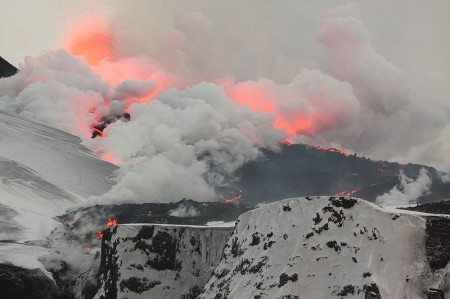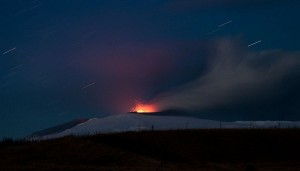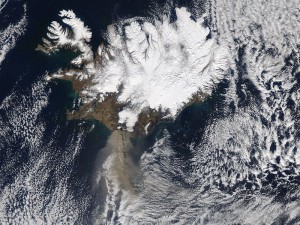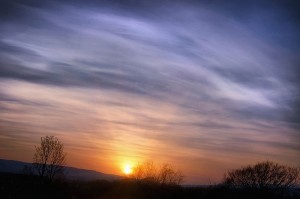RadioLab has an excellent podcast featuring Jay Melosh, a geophysicist who specializes in impact craters, and who advocates the hypothesis that the entire extinction event that killed off the dinosaurs at the boundary between the Cretaceous and Tertiary (the K-T boundary) took place over a period of two hours. The asteroid impact vaporized the crust of the Earth where it hit (near the Yucatan peninsula) and blasted this rock gas into space. There it cooled down to create little glass particles that reentered the atmosphere. On reentry the glass burned up, but there was so much of it that it raised the temperature of the atmosphere by several hundred degrees Celsius. Anything near the surface (mostly the dinosaurs) was cooked, but anything living just beneath the surface could have survived.
Tag: dinosaurs
Reading poetry in the morning

Mrs. Z. donated two small books of poetry, The Best Poems Ever and Poetry Speaks (much thanks). The second comes with an audio cd, where many of the poems are read by the authors. Since some of the authors are adolescents themselves, their reading can be a little halting, but there is a nice authenticity.

The The Best Poems Ever has a lot of the classics. I read William Blake’s The Tiger as an example. The students though my reading was pretty lifeless so I recited it for them with a lot of emphasis and hand motions. They were pretty impressed that I’d memorized the poem so quickly, at least until I told them I’d memorized it years before (probably in middle school actually). I probably should have kept this secret. Sometimes you need the mystique.
We’ve come up with a schedule so someone different will read every morning at the end of community meeting. They’re required to choose their poem ahead of time and have practiced reading it before they present. We also take a little time for comments, the objective is to try to identify the issues and the subtexts. This is how I discovered, with much reasoned explanation, that Edna St. Vincent Millay metaphorically described the asteroid impact theory for the extinction of the dinosaurs over 30 years before scientists came up with the idea.
Integrating Eyjafjallajökull

Current events often generate the teachable moments we’re always seeking in order to strike students’ imagination. The eruption of Eyjafjallajökull is a prime example. I’ve already used it to point out the intersection of geothermal energy and plate tectonics, but there is so much more.

Eyjafjallajökull has been a wonderful subject for the art of photography. The image above is a great example but the time-lapse photos have been excellent. The photo to the right captures not just the stars streaking across the sky with a three minute exposure but the fiery red arcs of the volcanic ejecta.

One of the major benefits of the space program so far has been its Earth observing satellites. There is so much going on in the image to the left that it’s hard to know where to start. Why are there all those clouds over Iceland? (warmer land mass creates convection); what’s with the two plumes from the volcano, one concentrated high level and one disperse low level plume; fjords on the upwind side of the island and the straightened coastline on the lee; greenish plumes of glacier-ground, rock flour discharging into the ocean.

The dinosaurs were done in either by an asteroid impact in the Yucatan or the eruption of the massive flood volcanoes in Deccan, India, or quite probably both. Both of these events launched an enormous amount of ash, gas and fine particles into the upper atmosphere, blocking sunlight, causing global cooling. Well the ash from Eyjafjallajökull and the sulfur dioxide gas may be having a similar effect on Europe, and if there’s enough of it, on the world. The 1992 eruption of Mt. Pinatubo cooled the globe by about half a degree Celsius.